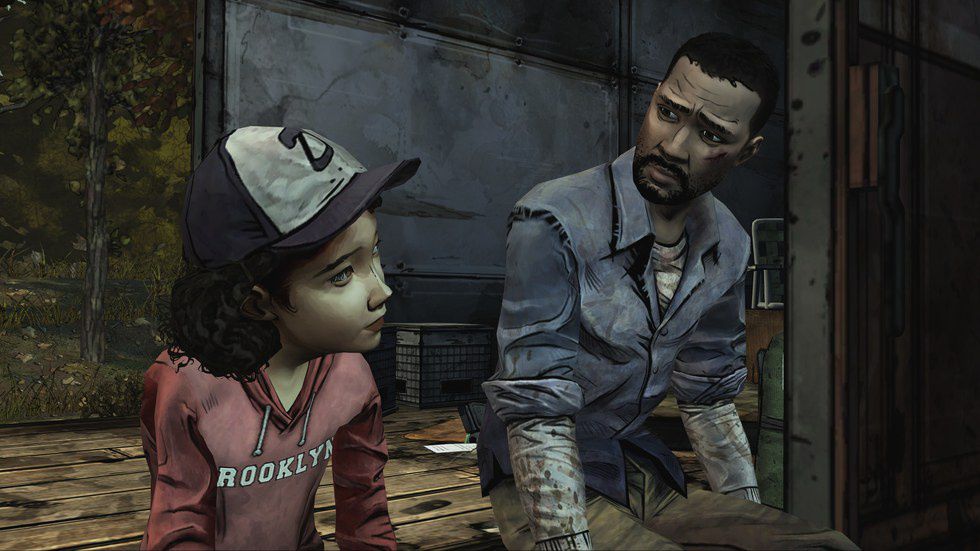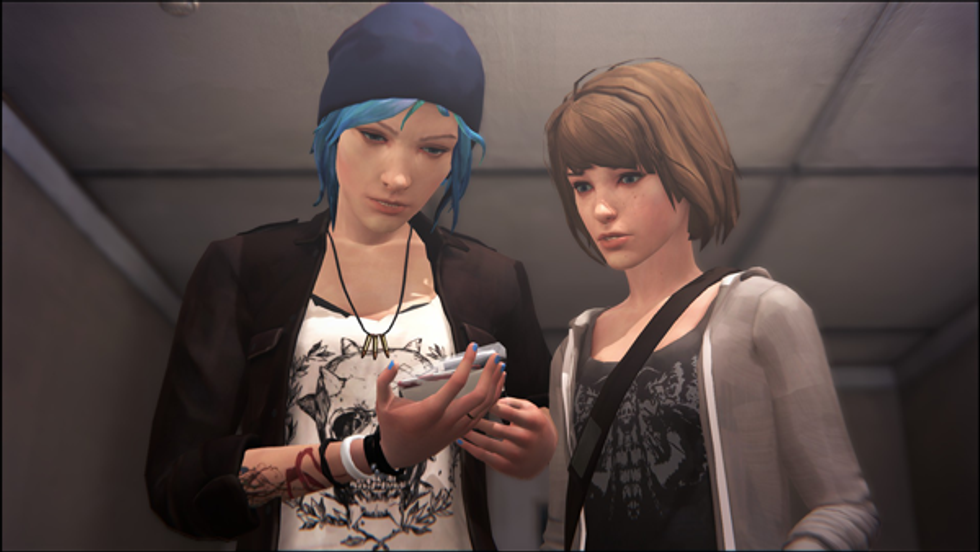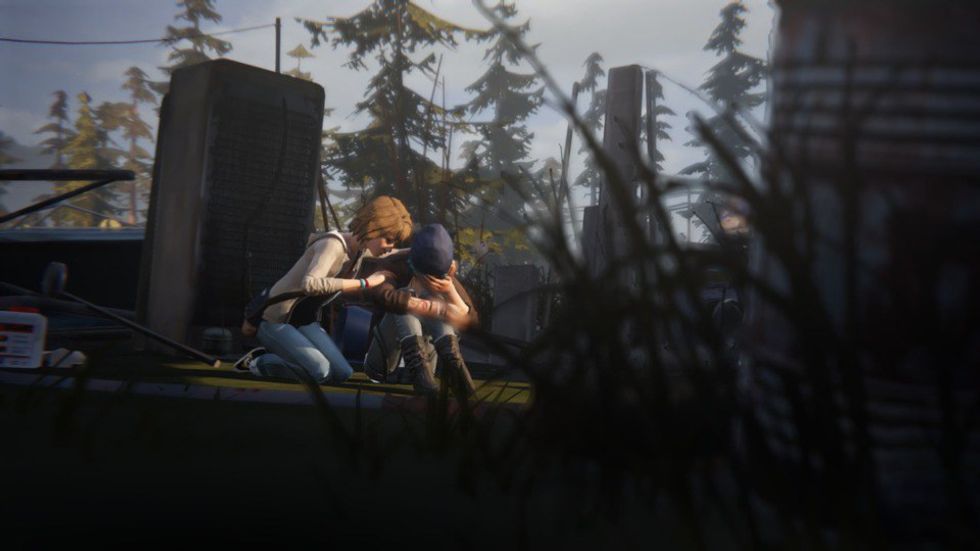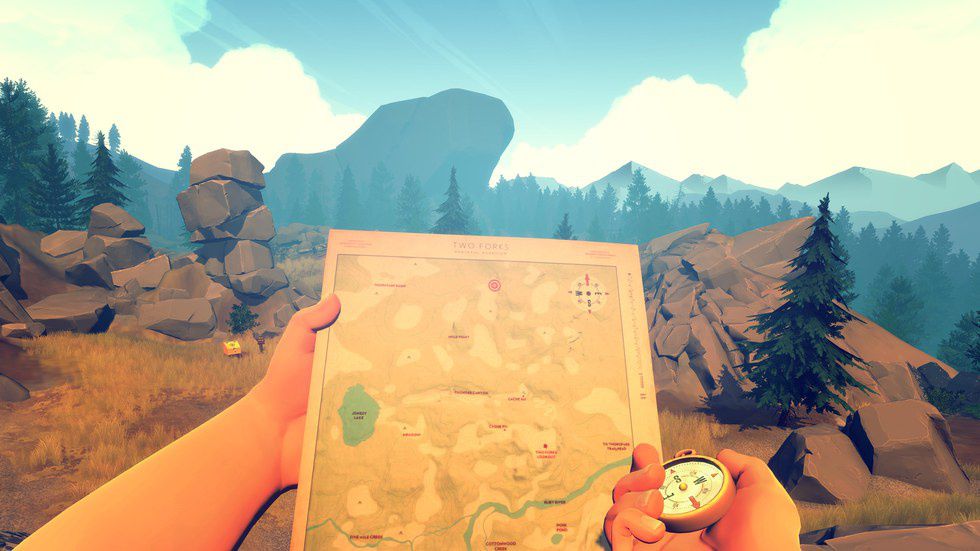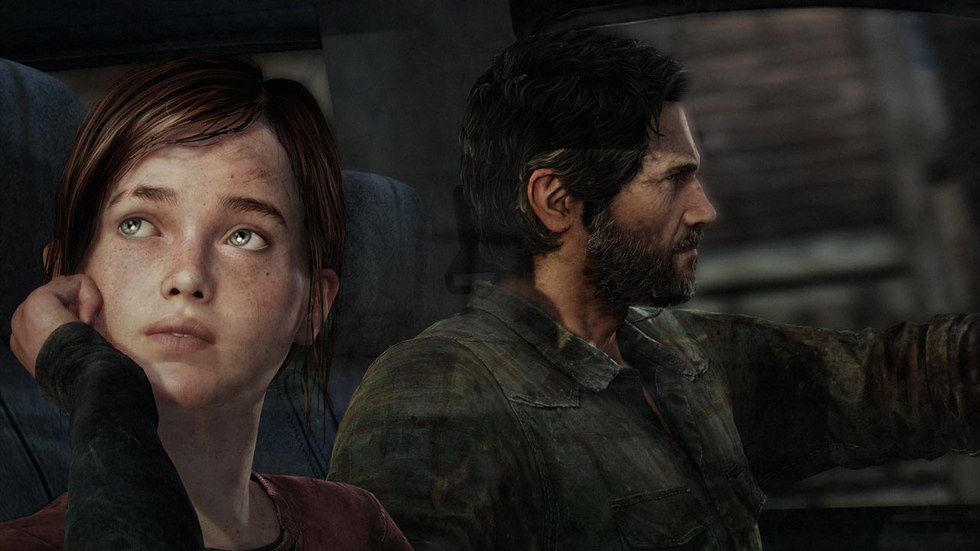(Warning: Spoilers for the following games will be in this text -- The Walking Dead S1, Life Is Strange, Firewatch and the Last of Us. Do not read if you get easily offended by spoilers. Thank you!)
There are many games out there that represent relationships almost perfectly -- but only a few have the realistic qualities to a T. These are those video games. The relationships still have made an impression on me, even months AND years after I played them. They made me laugh, they made me cry (and when I say cry....I mean like actual sobbing) and they made me consider my own personal relationships. The writers and game developers design these characters and their counterparts in a way that it makes it easy for the player to associate their hardships and qualities with their own.
Here are my personal favorites:
1. Lee Everett and Clementine (The Walking Dead Game S1)
Set in the beginning and eventually the post-zombie apocalypse world, Telltale's "The Walking Dead" pretty much sets the bar for realistic relationships in games. Telltale, the gaming company, pretty much sets the bar alone as most of their games are heavily story, choice and relationship based. What sets "The Walking Dead" apart from their other titles is the innocent, protective, trustworthy and paternal relationship between Clementine and Lee -- the two protagonists of the game.
Their relationship is awkward and rocky at first, which is to be expected from a forty-something and a kid who had never met. Quickly, their relationship mirrors a father-daughter relationship that many other characters seem to notice. Lee becomes very over-protective of Clementine, who relies on him to teach her survival skills. Many moments with Lee and Clementine are sweet, emotional, awkward and deep -- which is indicative of many father-daughter relationships. As it is eventually revealed that Clem's parents are dead, it is viewed that Lee had even a bigger impact on Clementine's character than her own now-deceased father.
The Clincher: Lee's Death in which Clementine has the choice to kill him
2. Max Caufield and Chloe Price (Life is Strange)
Everyone needs a best friend and partner in crime (and basically GIRLFRIEND!! in this case) to get through their day to day life. In "Life Is Strange", Max Caufield returns to her hometown of Arcadia Bay and quickly realizes after a turn of events that she has the power to rewind and manipulate time. She quickly becomes reunited with her childhood best friend, Chloe Price. Of course, since they are now older and have experienced different things and have evolved into total opposites, Max and Chloe find it hard to relate to each other anymore. I find this EXTREMELY realistic in terms of losing connections with people you used to be so close with.
Max learns that Chloe has a new best friend, who is now missing. The premise of the game is to help Chloe find her friend with Max's powers. There are moments where the characters keep testing each other's trust, which is what anyone would normally do after reconnecting with someone. But, it becomes quickly obvious that because of the pair's history that they are inseparable. Your teenage best friend will always have a place in your heart, thick or thin, and I believe this game displays this greatly.
The Clincher: Max consoling Chloe when they find her missing friend's body
Even though it's clear that Rachel, Chloe's missing friend, was a substitute for Max when Chloe's dad died -- it also obvious that Rachel and Chloe shared a closeness that Max would never understand. The fact that the writers added this scene adds a complex realness to Max's character.
3. Henry and Delilah (Firewatch)
The visually stunning game "Firewatch" does relationships on a whole 'nother level than the other games in this article. You play as Henry, who is running away from the problems that come with a sick wife that has early onset dementia. He runs to literally the middle of nowhere and takes a summer job as a firewatcher in the Shoshone forest. He "meets" Delilah, his higher-up, and they watch for fires together because their posts are near each other.
Their entire relationship is spent over walky-talkies, and it borderlines romantic at points. Henry never meets Delilah face to face, but the way the game developers designed their friendship -- it's charmingly and sometimes painfully realistic. It's like: what happens when you put two strangers in the middle of nowhere together with no one else to talk to? Of course, they talk to each other. Henry and Delilah's banter is so refreshing -- it's borderline natural. Like it's not a video game, but totally happening in real life. These two strangers confide in each other, argue, mourn and bullshit together because that's what people would naturally do. It's a game about being lonely and becoming closer to others by embracing that loneliness.
The Clincher: Henry and Delilah have the chance to meet -- and they don't
A forest fire gets out of control, and Henry and Delilah are evacuated from their forest lookouts. At this point, Delilah has become distant because of some pretty sad developments, but the two promise to meet at Delilah's look out and leave together (pictured above). But once Henry arrives, Delilah has already gone without him. I think this is a pretty realistic move -- I feel as though Delilah didn't want to ruin any closeness or level of ambiguity they may have developed through their relationship by meeting face to face. It's a pretty fair representation of what would really happen if you were too nervous or ashamed to see someone face to face who knows so much about you without even actually meeting you.
4. Joel and Ellie (The Last of Us)
In another post-zombie apocalypse situation, "The Last of Us" follows the story of the two protagonists -- Joel and Ellie -- as they traverse the U.S. in search of the radical group The Fireflies. Joel was commissioned to deliver Ellie to the Fireflies because it is found that she is immune to the infection and the Fireflies are reportedly working on a cure for the virus. The dynamic within Joel and Ellie is another that of a father-daughter relationship.
The game is designed to have the player associate Ellie as a replacement for Joel's deceased daughter Sarah -- and even Joel comes to realize that association. Joel and Ellie spend an entire year together, learning from each other, mutually protecting each other and learning more about each other's pasts. Ellie and Joel get each other out of thick and thin, proving that even just briefly meeting someone and being forced to spend time with them can change your outlook and what you deem important. This game really shows you how minuscule meetings can change your course of life.
The Clincher: Joel takes Ellie back from the Fireflies and lies to her about the cure
In order to keep Ellie with him and continue to care for her, Joel tells Ellie that the Fireflies are no longer searching for a cure. Ellie takes his word for it. The game jumps a period later and Ellie confronts Joel about the lie. He lies again, and you can tell she knows it. The fact that this happens just solidifies the realistic tendencies to their relationship. You would lie to protect and keep those you love close to you.
Joel became extremely dependent on Ellie's company and he realized this when he was handing her over to the Fireflies. He lands on the choice that Ellie is more important to him than a cure -- he became tired of losing those he cared about. He was tired of sacrificing, especially when he felt as though no one else was. It's a choice that many would land on in real life.




